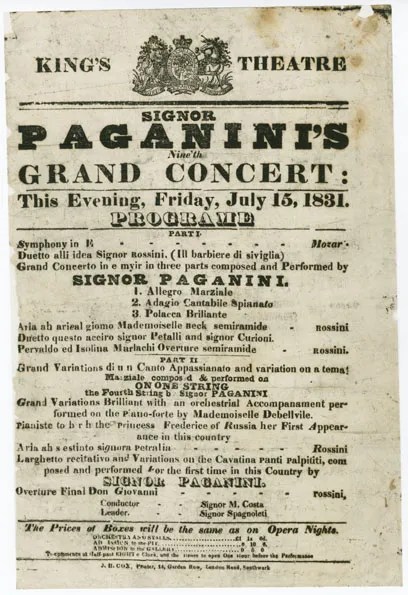There are numerous considerations in planning concert programs, so I can’t address them all. And if you’re planning a degree recital, you may have some requirements like genre or era (a Baroque piece, a chamber piece) that constrain what you can include. Likewise, orchestras have a pretty constrained format: opener, concerto, intermission, symphony or other “big” piece.
If you are producing an album, you likely have more leeway, particularly in regards to logistics and personnel. But here a few general considerations for planning music programs, either live or recorded.
Energy flow
First of all, think about the energy flow of a concert. How do you want people to feel at the end? Sometimes a rousing conclusion is needed. Sometimes ending with a contemplative piece feel right.
How do you want to start the concert? Will it be a snap to attention? Will you establish a sense of mystery?
Many classical pieces have contrasting movements–often fast+slow+fast. You should likewise give some contrast in the flow of the concert.
Contrasts between pieces:
- Long, singular movement vs. short miniatures
- Overall fast vs. overall slow
- Overall loud vs. overall quiet
- Overall lyrical vs. overall rhythmic
- Many players vs. few players (or solo)
- You get the idea
Logistics
If you haven’t already, take a look at my post about stage management. You can make things easier for yourself and your stage crew by thinking through some of the “moves” that need to be made.
How can you easily reset the stage in between each piece? Maybe a massive set change needs to happen–put that at intermission.
I’m a big fan of tableau-style stage setups. Percussionists do this a lot. You have the equipment you need for one piece in one corner of the stage, the equipment for another piece in another corner. That way you can just move from one place to another quickly, without moving things around.
Personnel
If it’s just you and a collaborative pianist, you might not need to think so much about this. If you are planning a concert of mixed ensembles, or maybe a concert band where not everyone plays on each piece, you should consider the stage logistics, as well as personnel.
Perhaps the piece with the most players should be last? Perhaps it should be first, so the extra people can go home? Perhaps you have a flutist playing on 4 out of the 5 pieces–can you give them a break in the second half?
Representation
Consider whose music you are playing. Even if you have to play a Classical and a Romantic piece, you may not have to play Mozart and Beethoven. You could play Chevalier de Saint-Georges and Clara Schumann.
So many classical concerts feature the same Dead European Males. But there are countless composers from all backgrounds, and we need to celebrate them. You don’t have to make a big deal about it (that’s called “tokenism”). Just make a conscious effort to program people who aren’t white, male, and/or dead.
Check out the Institute for Composer Diversity for some ideas. On that site, you can search for pieces that fit your instrumentation, and filter by gender identity and demographic information. Maybe you’ll find someone like yourself!
Theme or angle
Consider having some kind of theme or angle for your concert. It helps audiences understand how disparate pieces are connected. If you have potential critics covering the concert, it helps them pitch a review or preview to their publication.
Themes could be anything from pieces about nature to pieces by local composers. I would shy away from obvious “diversity” programs (pieces by women, pieces by Black composers). Usually that comes across as virtue-signalling. By all means, program a concert of all women composers, but think of what else connects their pieces. These connections help audiences see the reasons why you’re doing these pieces, beyond showing how woke you are.
Experiment!
Part of the fun of live music (when we get to do that again) is that it’s not entirely predictable. Try out new pieces, but also try out new orders to the pieces. Make notes at concerts. How would you have ordered things?



